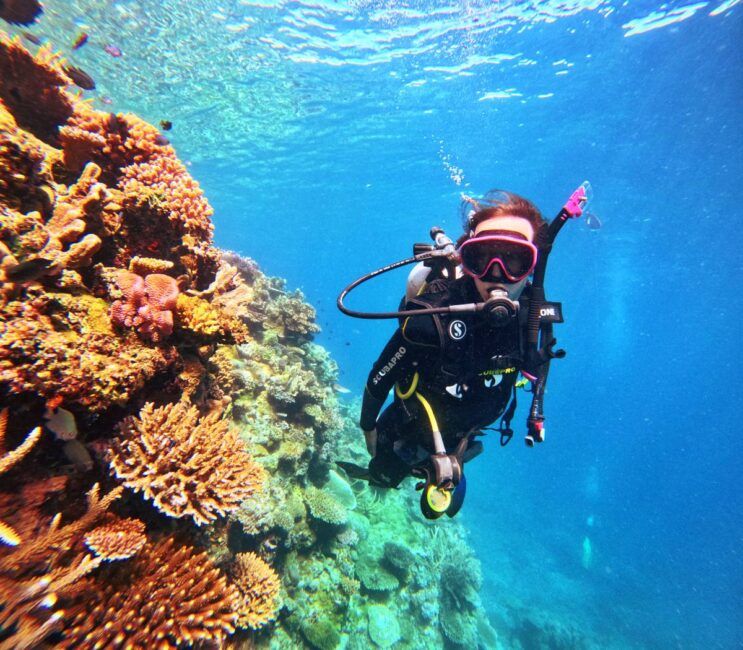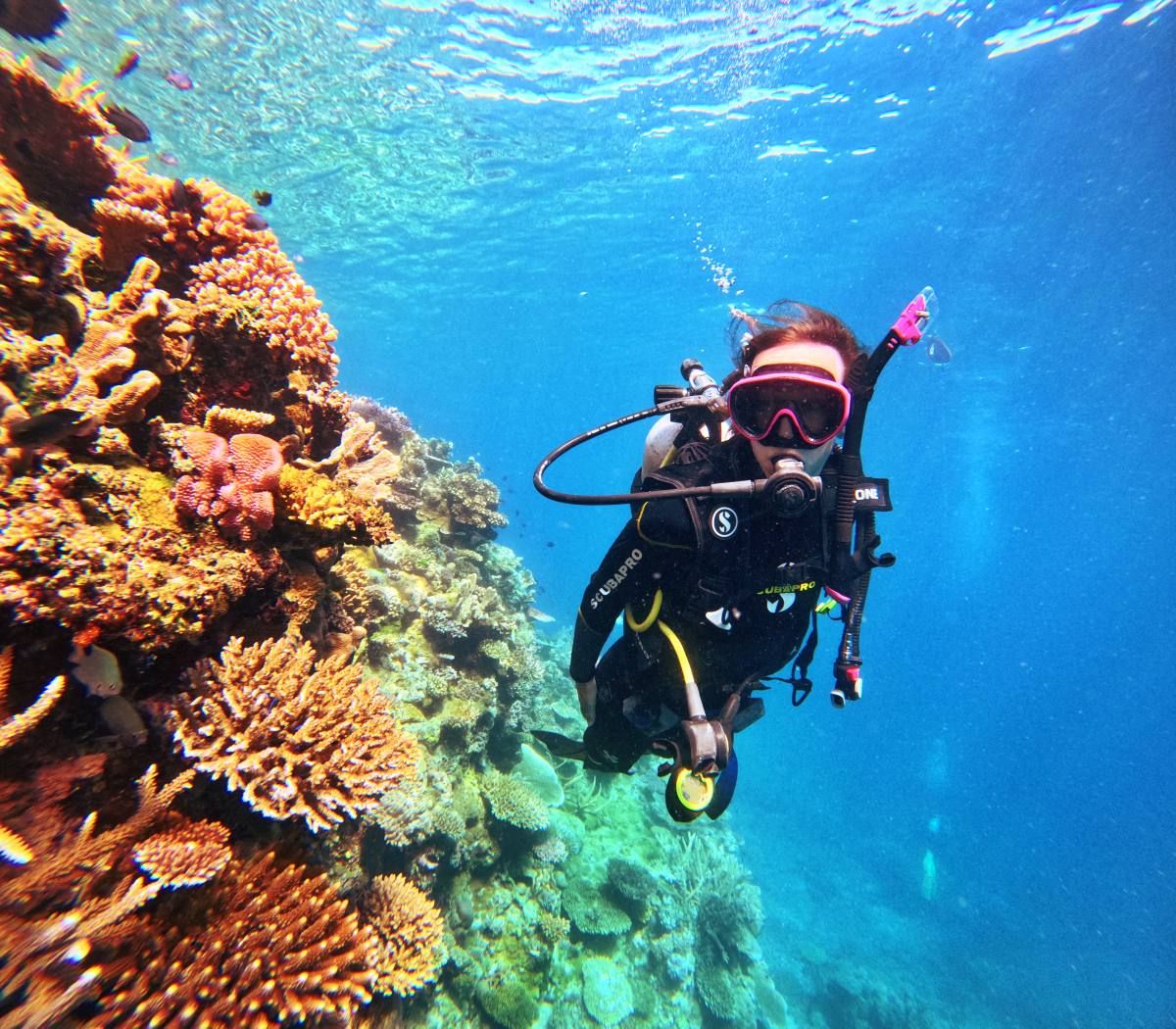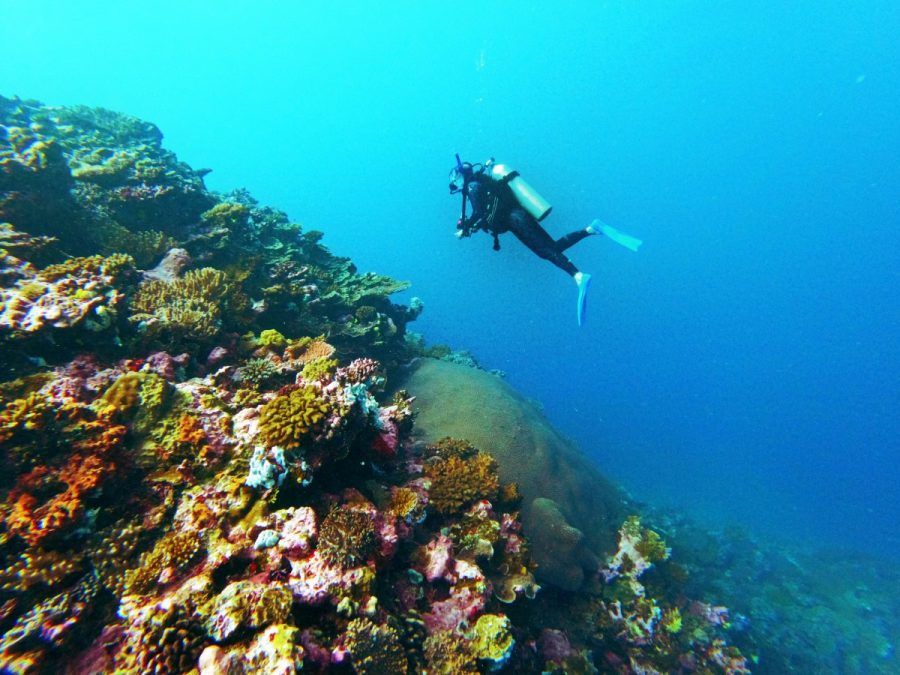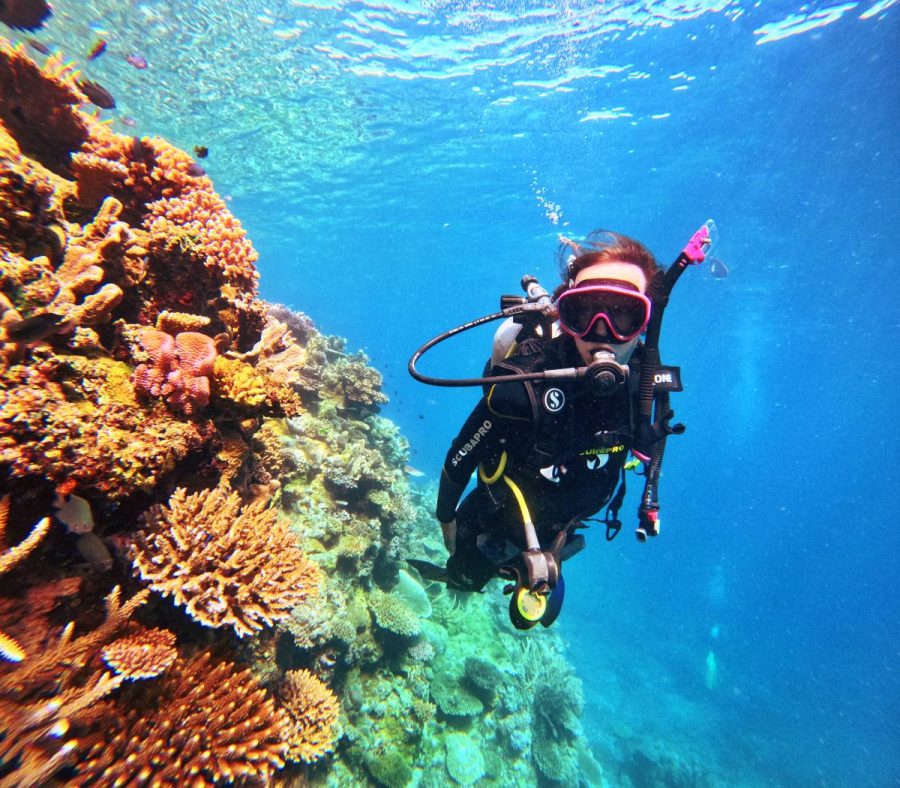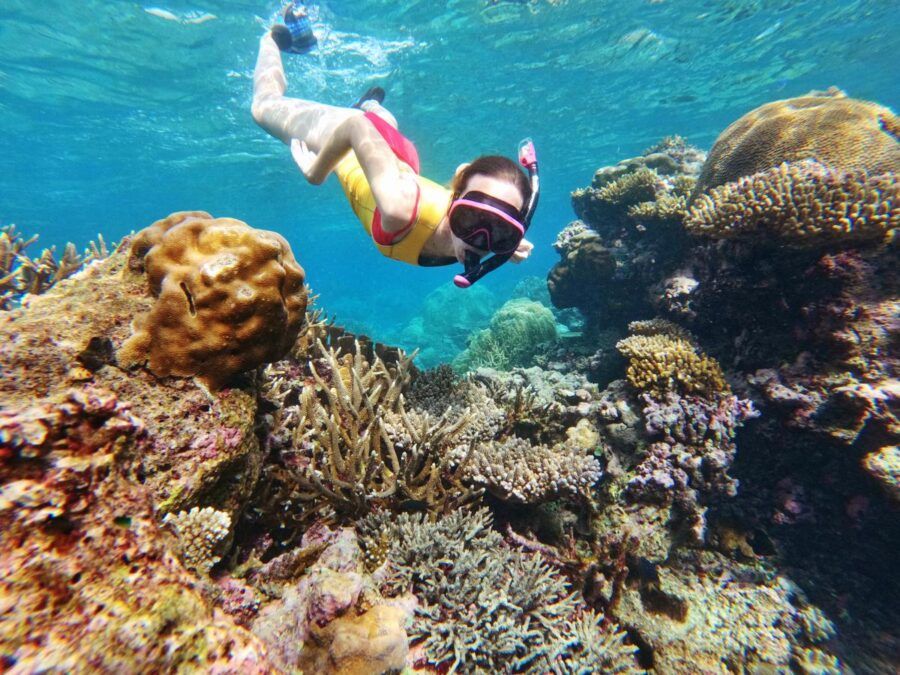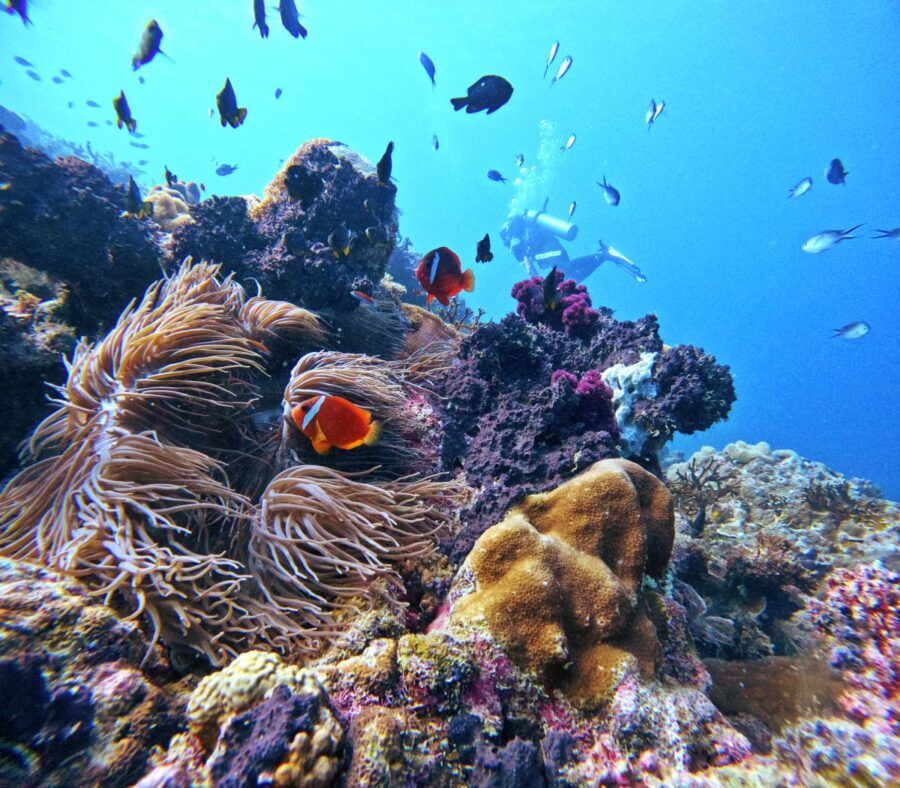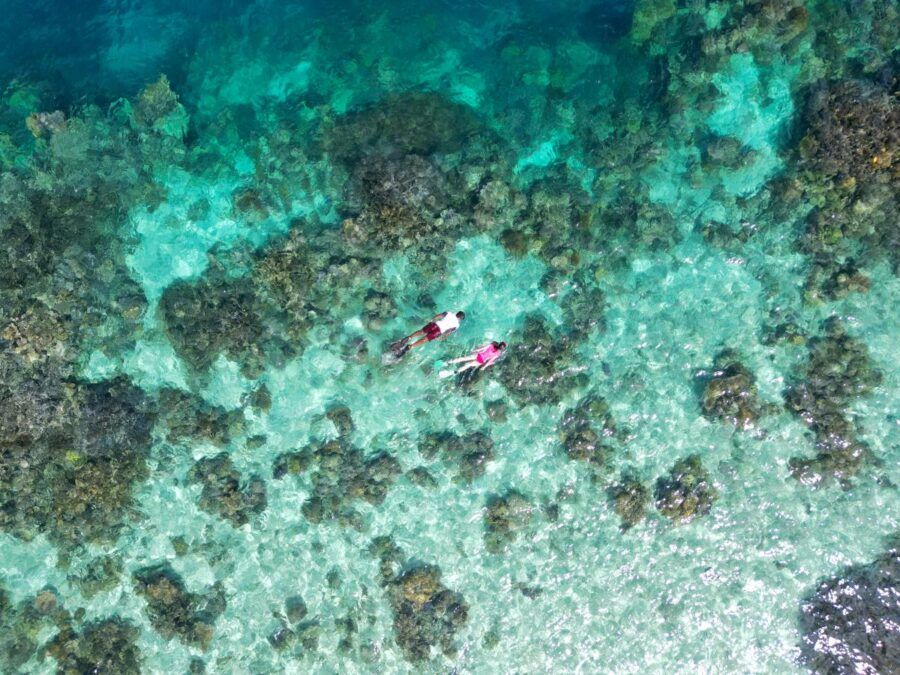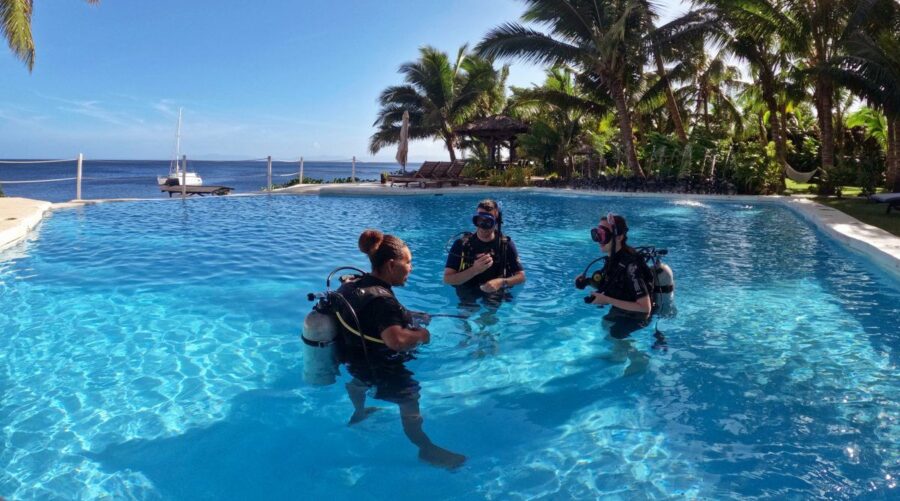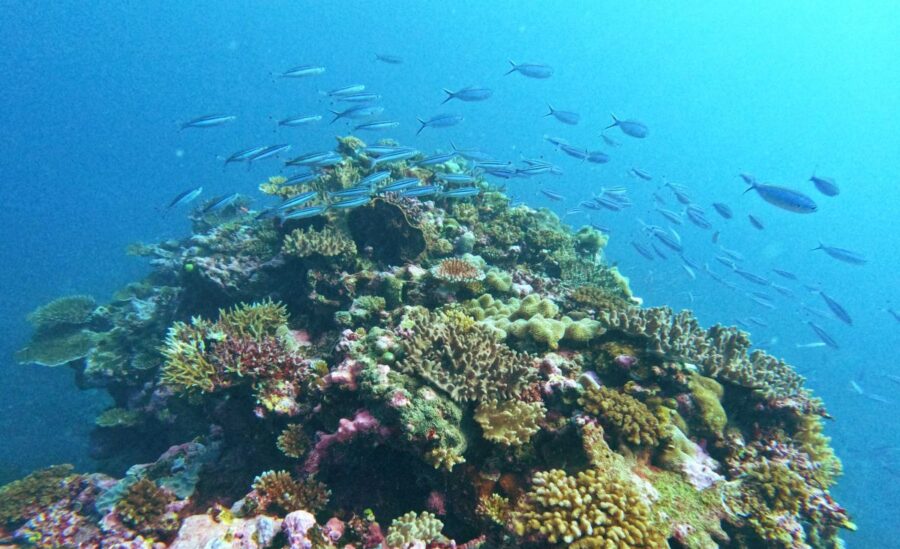The Scuba Diving Seasons in Fiji
Unlike many places in the world, Fiji doesn’t have a “bad” time to scuba dive. The visibility is pretty darn good all year round, averaging around 30 m (100 ft) in both summer and winter. However, if you want the conditions to be a little clearer or warmer or perhaps want the opportunity to see humpback whales, then there will be the best time to scuba dive in Fiji for you. Get more advice on the Fiji diving seasons in the guide below.
Before we “dive” into the guide to the best time to dive in Fiji, be sure to compare other variables, such as tourist season, weather and events, in The Best Time to Visit Fiji: A Month by Month Guide.
Table of Contents
The Best Time in Fiji to See…
Divers might choose a particular time to dive in Fiji to see certain marine creatures. While there are thousands of species to see all year round, there are some times that are better to see certain species. Check out some examples below.
- Manta Rays – May to October
- Humpback Whales – August
- Bull Sharks – January to October
- Coral Spawning (Balolo) – October and November
- Turtles – November to March
- Tuna – November to March
See this list in more detail in The Best Seasons for Seeing Wildlife in Fiji; now, let’s get back to the diving…
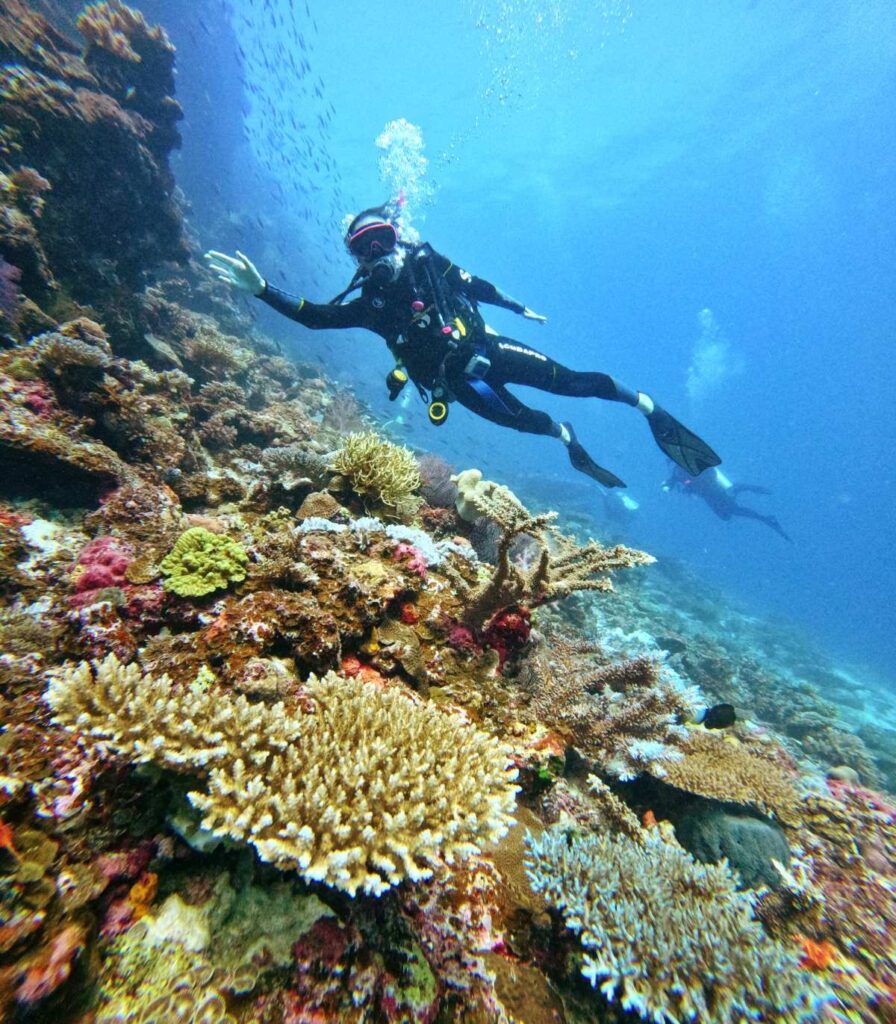 © FijiPocketGuide.com
© FijiPocketGuide.comWinter Scuba Diving in Fiji
Fiji’s winter season, also known as the dry season, runs from April to October. However, the weather and water temperatures feel far from your typical “winter”. Air temperatures can be anywhere between 21 and 30°C (69.8-89°F), while sea temperatures are a comfortable 25-28°C (77-82°F) – ideal for diving! A 5 mm full-length wetsuit is usually comfortable for these winter months.
Water Visibility in Winter
The winter season is also commonly known as the “dry season” due to the much less frequent precipitation than what’s experienced during other months of the year. This can also improve diving conditions, as there is much less surface run-off from islands obscuring visibility. Visibility in the winter season can be 30-50 m (98-165 ft).
The Peak Tourist Season
However, there is one downside to the winter season: it’s the most popular time for people to visit Fiji. Resorts are often fully booked, particularly in July and August, and dive sites see much more traffic during these months. Nevertheless, a way to avoid the crowds is to head to the less-visited islands, such as the Lomaiviti Islands and Kadavu – both home to arguably some of the best dive sites in the country! Find out more in the 20 Best Places to Scuba Dive in Fiji.
Learn more about the seasons in Fiji in The Fiji Weather, Seasons & Climate + Weather by Month. Plus, get more advice on planning a scuba trip to Fiji with The Best Scuba Diving in Fiji: Top 10 Places to Scuba Dive.
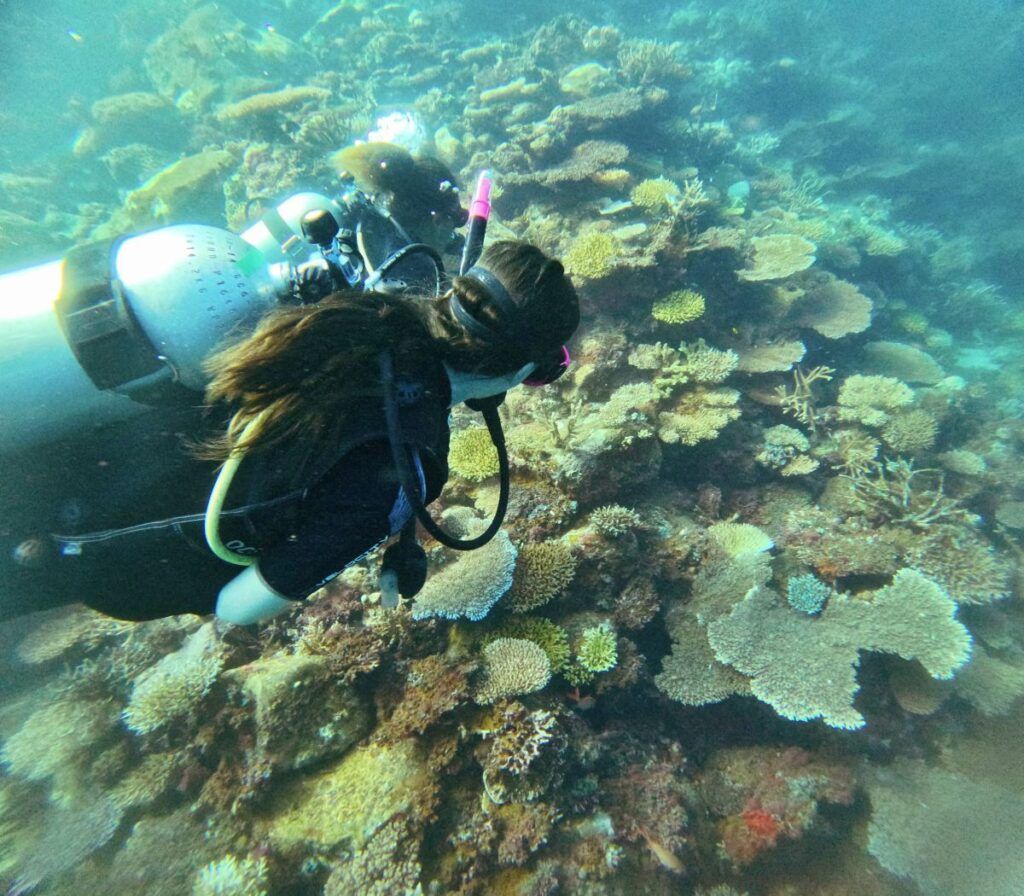 © FijiPocketGuide.com
© FijiPocketGuide.comSummer Scuba Diving in Fiji
Summer in Fiji, November to March, is when temperatures get warmer, it gets more humid, and there’s a higher rate of precipitation. Dive conditions are still good during these months, with almost all dive centres staying open throughout the season. However, it can be argued that the conditions aren’t quite as good as in winter…
Expect the average maximum air temperature to be around 31.6°C (88.9°F), while sea temperatures are often around 28.5°C (83°F). A 3 mm full-length or a shortie wetsuit is usually suitable for these months.
Water Visibility in Summer
However, a downside to the summer season is that it’s also known as the “wet season” due to the more frequent rainfall patterns. Rainfall rates are different for each island group, with islands like the eastern side of Viti Levu, Vanua Levu and Taveuni experiencing around 1,500-2,500 mm a year. Drier climates can be found in the Yasawa and Mamanuca Islands. The issue with rainfall is that it creates surface run-off on the islands, which runs off into the ocean, often reducing visibility to an average of 15-30 m (49-98 ft).
Unfavourable Ocean Conditions
Another risk of diving in summer is the cyclone season. While cyclones are not a common occurrence in Fiji, they have happened historically in January, February and March. The higher winds experienced through the cyclone season often make water conditions particularly choppy further away from shore. Nevertheless, there’s plenty of sheltered diving opportunities in between the islands, such as around the Mamanucas and the Yasawas.
Tourist Low Season
On the plus side, the summer season is the least busy time in Fiji for tourist visitors, often meaning that discounted resort and airfare rates are easy to find. This means that you’ll likely have your first choice of accommodation. There are usually discounts on accommodations and sometimes even flights, and you have entire dive sites to yourself (and your buddy/dive instructor, of course). More advantages for travelling at this time of the year can be found in the 10 Reasons to Travel in the Low Season in Fiji.
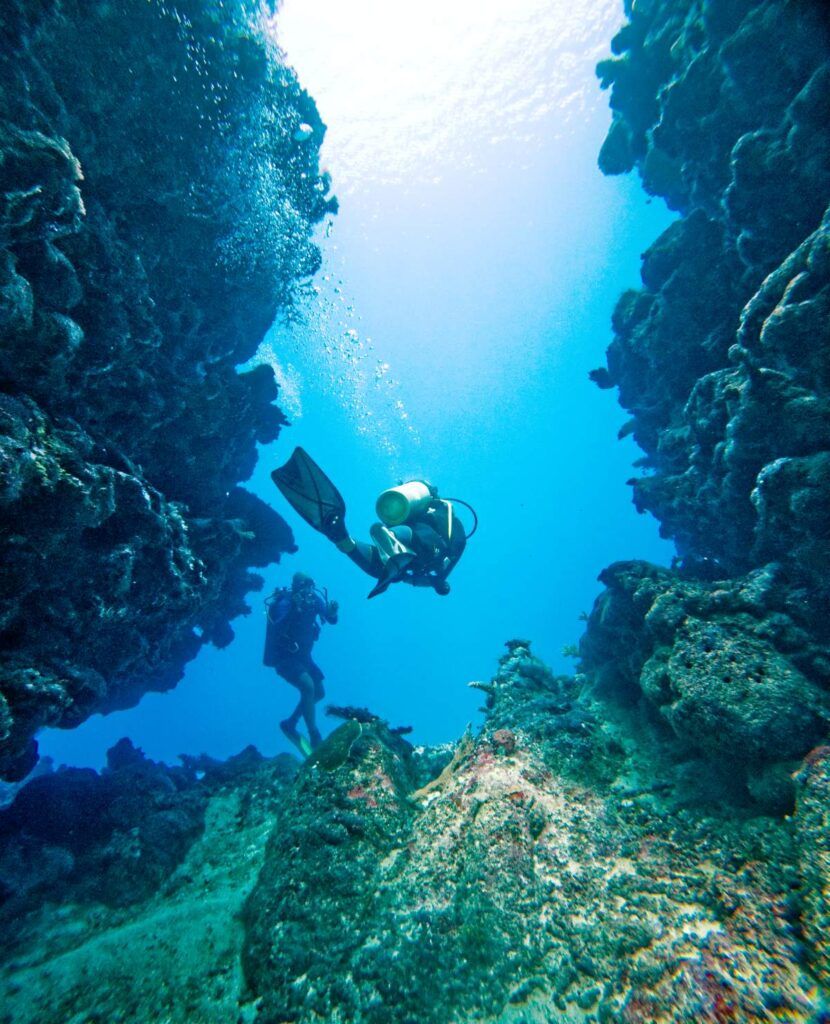 © FijiPocketGuide.com
© FijiPocketGuide.comFrequently Asked Questions About the Best Time to Scuba Dive in Fiji
Now that you know about the best time for scuba diving in Fiji, here are the answers to the internet’s frequently asked questions about diving in Fiji!
Is Fiji good for scuba diving?
Absolutely! Fiji is renowned as one of the world’s top diving destinations. With its vibrant coral reefs, diverse marine life, and crystal-clear waters, Fiji offers exceptional diving experiences for all levels. The country boasts over 390 coral species and more than 1,200 fish species, earning it the nickname “Soft Coral Capital of the World”. For more information, check out our guide to the best dive sites in Fiji.
How much does it cost to scuba dive in Fiji?
The cost of scuba diving in Fiji varies depending on the location, dive operator, and type of dive experience. Generally, a single tank dive can range from FJ$150 to FJ$260 (US$70 to US$125), while multi-dive packages or liveaboard experiences can cost more. Some resorts offer dive packages that include accommodation and meals. For more information, check out our guide to costs in Fiji.
Do you need a certification to scuba dive in Fiji?
While certification is not strictly required for all diving experiences in Fiji, it’s highly recommended and often necessary for more advanced dives. Many dive operators offer introductory or “Discover Scuba” courses for beginners. For deeper dives or more challenging sites, a PADI Open Water certification or equivalent is typically required. For more information, check out our guide to scuba diving certifications in Fiji.
What marine life can you see while diving in Fiji?
Fiji’s waters are teeming with diverse marine life. Divers can encounter colourful soft corals, various shark species (including bull sharks and reef sharks), manta rays, sea turtles, and a myriad of tropical fish. Some sites are known for specific attractions, such as the Beqa Lagoon for its shark dives or the Somosomo Strait for its abundant soft corals. For more information, check out our guide to Fiji’s marine life.
Are there any shark diving opportunities in Fiji?
Yes, Fiji offers some of the world’s best shark diving experiences. The most famous is the Shark Reef Marine Reserve near Pacific Harbour, where divers can encounter up to eight species of sharks, including bull sharks. Other popular shark diving locations include Beqa Lagoon and the Yasawa Islands. These dives are conducted under strict safety protocols by experienced dive operators. For more information, check out our guide to shark diving in Fiji.
More About the Best Time to Dive in Fiji
That’s it for our guide to the best time to dive in Fiji; for more information about scuba diving in Fiji, check out the following articles:
- How to Learn to Scuba Dive in Fiji: The Ultimate Guide
- 10 Best Places to Scuba Dive in Fiji
- 20 Best Dive Resorts in Fiji
Finally, if there’s anything we’ve missed, you’re likely to find it in The Guide to Scuba Diving in Fiji.
Sources:
The information in this guide has been compiled from our extensive research, travel and experiences across Fiji and the South Pacific, accumulated over more than a decade of numerous visits to each destination. Additional sources for this guide include the following:
- Tourism Fiji (General travel advice - Updated [2025])
- Fiji Hotel and Tourism Association (Tourism trade association - Updated [2025])
- SPTO (Pacific tourism advice - Updated [2025])
- Ministry of Tourism and Civil Aviation (Tourism statistics - Updated [2025])
- Land Transport Authority (Road safety advice - Updated [2025])
- Fiji Immigration (Visa and immigration advice - Updated [2025])
- Fiji Revenue & Customs Service (Customs and visitor taxes - Updated [2025])
- Biosecurity Authority of Fiji (Biosecurity advice - Updated [2025])
- Fiji Meteorological Service (Weather forecast and warnings - Updated [2025])
- Fiji Bureau of Statistics (Statistics and travel data - Updated [2025])
- Safe Travel (New Zealand travel advisory for Fiji - Updated [2025])
- Smart Traveller (Australia travel advisory for Fiji - Updated [2025])
- Travel.State.Gov (U.S. travel advisory for Fiji - Updated [2025])
Our editorial standards: At Fiji Pocket Guide, we uphold strict editorial standards to ensure accurate and quality content.

About The Author
Robin (Ruveni) C.
This article was reviewed and published by Robin, the co-founder of Fiji Pocket Guide. He has lived, worked and travelled across 16 different countries before settling in the South Pacific, so he knows a thing or two about planning the perfect trip in this corner of the world. Robin is also the co-founder of several other South Pacific travel guides and is a regular host of webinars with the South Pacific Tourism Organisation.
